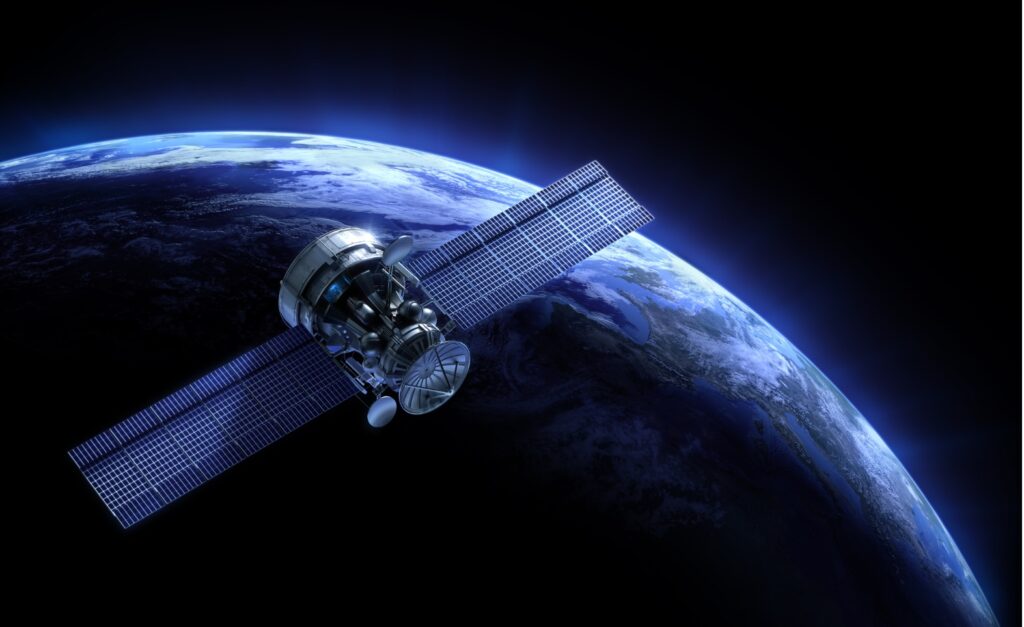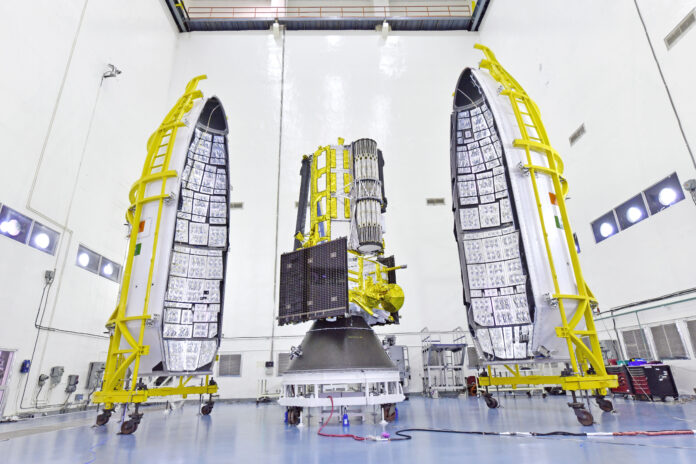On July 30, 2025, India and the US will jointly launch one of the most ambitious Earth observation missions in history — NISAR (NASA-ISRO Synthetic Aperture Radar).
Dubbed the most advanced and expensive radar satellite ever built, NISAR will be launched from Sriharikota at 5:40 PM aboard ISRO’s GSLV-F16. It’s a symbol of scientific unity, environmental action, and a powerful tool for managing the planet more wisely.
🌍 What is NISAR?

NISAR is the first Earth observation satellite developed jointly by ISRO and NASA.
Its main job: to scan the Earth’s land and ice surfaces with pinpoint accuracy, tracking movements as small as a few centimeters.
Representational image of ISRO Satellite. (PC: indbiz.gov.in)
Powered by dual-frequency radar — L-band (from NASA) and S-band (from ISRO) — NISAR will observe the Earth in 3D, capturing data even in darkness or cloud cover. It will orbit 743 km above Earth in a Sun-synchronous orbit (SSO).
🔍 What Will NISAR Track?

-
Earthquakes, landslides & volcanoes
-
Shrinking glaciers and melting ice sheets
-
Crop growth, drought effects, and soil moisture
-
Sea ice, coastal erosion, and surface water resources
-
Storm damage and disaster zones
NISAR will map the globe every 12 days, with 4–6 scans per month per region. It is expected to function for at least three years, collecting 80 terabytes of data per day — all to be made freely accessible.
🌱 Why It Matters
This isn’t just a satellite — it’s a climate resilience tool.
-
It will help farmers make better crop decisions.
-
It will guide disaster response teams in real time.
-
It will empower scientists and policy-makers with deep insights into land use, water resources, and global warming trends.
“NISAR is a symbol of global unity, scientific excellence and hope. It promises to safeguard our future by helping humanity live more wisely with nature.” – NASA & ISRO joint statement.
🛰️ Key Firsts of NISAR
-
🌐 First dual-frequency radar satellite to capture Earth data in L-band and S-band.
-
🚀 First time GSLV will inject a satellite into Sun-synchronous orbit (SSO).
-
🤝 First large-scale ISRO-NASA collaboration on Earth observation.
-
💰 World’s most expensive Earth-observing satellite: $1.5 billion.
-
☁️ Massive data output: 80 TB/day, stored and shared via cloud platforms.
🧠 In Summary
-
Launch Date: July 30, 2025 – 5:40 PM (Live from Sriharikota)
-
Mission Life: Minimum 3 years
-
Orbit: 743 km Sun-synchronous
-
Goal: Climate monitoring, disaster response, agriculture, infrastructure mapping
-
Impact: Global — from farmers and city planners to climate scientists
This satellite will quite literally change the way we see Earth — from soil moisture in Indian farms to ice sheets in Antarctica.








